Checkology is a website designed to help students learn to be discerning consumers of online, print, and television media. Checkology has a free version and a premium version. This review is only about the free version of Checkology.
Checkology’s free version offers four interactive modules for students to complete. Each of the modules is comprised of between twenty and forty-seven instructional video clips and interactive comprehension checks. The four modules are titled Info Zones, Democracy’s Watchdog, Practicing Quality Journalism, and Misinformation. As you might expect, the contents of the modules gets progressively more difficult as each section is completed.
Checkology’s Info Zones module is contains thirty-one sections. The purpose of the Info Zones module is to help students understand how online media (videos, memes, articles) is used to persuade, provoke, sell, entertain, or otherwise present information. Throughout the module students will watch a short video explanation then answer application questions. Most of the application questions present students with three examples of media and they have to identify its purpose and or how it is used to persuade, provoke, sell, or entertain.
In the Checkology module titled Democracy’s Watchdog students work through twenty-two modules designed to help them learn about role of investigative journalism in democracy. While this module does include some short explanatory videos, the stars of this module are the detailed timelines and articles about significant moments in history like Watergate and Nixon’s subsequent resignation that were shaped by investigative journalism.
Checkology’s Practicing Quality Journalism is the longest of the four free modules. This module contains forty-seven parts. In this module students play the role of a journalist gathering and verifying information. In the module students have to make decisions about which stories are newsworthy and which are not. As you might guess, students have to make decisions about the validity of the information that they find throughout this module.
The fourth free Checkology module is rated by them as the most difficult one. That’s the module that is titled Misinformation. In the Misinformation module students learn the difference between fake news and misinformation. The module does this by showing students examples of information that has been manipulated into misinformation. The examples include videos and articles, but the bulk of the examples are memes.
Applications for Education
Checkology could be a fantastic resource for middle school and high school students to use to learn how to be discerning consumers of online, print, and television media. Each of the four modules should take students forty-five to sixty minutes to complete accurately.
It should be noted that Checkology is provided by the joint effort of the News Literacy Project and the Facebook Journalism Project.












